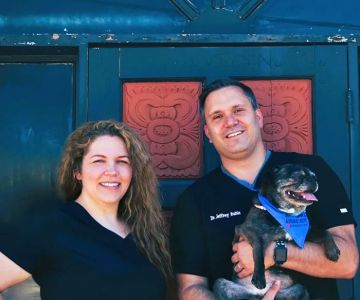- The Importance of Leash Training for Dogs
- Getting Started with Leash Training
- Key Leash Training Techniques
- Common Challenges and Solutions
- Real-Life Case Study: Successful Leash Training
- Tools and Resources for Training Your Dog
The Importance of Leash Training for Dogs
Leash training is a fundamental skill that every dog should learn. Not only does it ensure your dog’s safety, but it also helps establish clear boundaries and promote good behavior. Walking on a leash allows you to maintain control over your dog while outdoors, keeping them away from potential dangers such as traffic, other animals, or harmful substances. A well-trained dog on a leash is easier to manage and can enjoy outdoor adventures with less stress for both the dog and owner.
Proper leash training also strengthens the bond between you and your dog, as it encourages positive interaction and cooperation. In addition to safety, leash training helps your dog learn social etiquette, making walks more enjoyable for both parties.
Getting Started with Leash Training
Before diving into the actual training process, it’s important to prepare both yourself and your dog. Here’s how to get started:
1. Choose the Right Leash and Collar
For leash training, the right equipment is key. A standard leash that is 4 to 6 feet long is ideal, as it gives your dog enough room to move comfortably but still allows you to maintain control. Additionally, choose a collar or harness that fits your dog comfortably without being too tight or too loose. Some dogs may benefit from a harness rather than a collar, especially if they tend to pull or have respiratory issues.
2. Begin in a Quiet, Familiar Area
Start training in a quiet, familiar environment where there are fewer distractions. This could be indoors or in your backyard. A calm setting helps your dog focus on learning the new behavior without getting overwhelmed by unfamiliar sights, sounds, or smells.
3. Introduce the Leash Gradually
Let your dog get used to the leash and collar before starting the actual training. Allow them to wear the leash around the house for short periods. This helps them become familiar with the sensation of being on a leash and reduces any initial anxiety or resistance.
Key Leash Training Techniques
Leash training requires patience and consistency. The following techniques will help your dog master walking on a leash:
1. Teaching the “Heel” Command
The “heel” command teaches your dog to walk calmly beside you without pulling ahead. To train this behavior, start by standing still with the leash in hand. When your dog moves to your side, say “heel” and reward them with praise or a treat. Gradually increase the distance while keeping your dog’s attention on you. With consistent practice, your dog will learn to stay beside you during walks.
2. Using Positive Reinforcement
Positive reinforcement is essential in leash training. Whenever your dog walks calmly on the leash or follows the desired behavior, immediately reward them with treats or praise. This will encourage them to repeat the behavior in the future. Avoid using punishment for mistakes, as this can cause confusion or anxiety.
3. Stop and Go Technique
If your dog pulls on the leash, stop walking immediately. Wait for them to calm down before continuing. When they stop pulling and return to your side, praise them and resume walking. This teaches your dog that pulling on the leash results in a delay in the walk, while walking calmly leads to progress.
Common Challenges and Solutions
Leash training can come with its share of challenges. Some common problems include leash pulling, distractions, and resistance to wearing the leash. Here’s how to handle these challenges:
1. Leash Pulling
Leash pulling is one of the most common problems when training a dog to walk on a leash. To address this, try using a no-pull harness or collar, which can discourage pulling by redirecting the dog's attention. Remember, patience is key—don't tug back on the leash aggressively. Instead, use the stop-and-go technique to reinforce good walking habits.
2. Distractions
If your dog becomes easily distracted during walks, start by practicing leash walking in a quiet, low-traffic area. Gradually increase the level of distractions as your dog gets better at focusing on you. If your dog gets distracted, gently guide their attention back to you and reward them when they refocus.
3. Resistance to the Leash
Some dogs may initially resist wearing a leash, especially if they’ve never been trained before. If this happens, try taking small steps to acclimate your dog. Start by allowing them to wear the leash inside for short periods, gradually increasing the time as they become more comfortable.
Real-Life Case Study: Successful Leash Training
Let’s look at the story of Daisy, a 2-year-old Labrador who struggled with leash pulling. Her owners were frustrated because walks were chaotic and stressful. They began leash training by starting in their backyard and gradually moving to quieter neighborhood streets. Using the “heel” command and positive reinforcement, Daisy learned to walk calmly beside her owners. With consistent practice and patience, Daisy now enjoys daily walks without pulling or causing stress. This success story illustrates the power of persistence and effective training techniques in overcoming leash walking issues.
Tools and Resources for Training Your Dog
In addition to the right leash and collar, there are other tools that can help with leash training. Training treats, clickers, and no-pull harnesses can all support the process. Hidden Brook Veterinary offers a range of high-quality products, including training equipment and pet care essentials, to make your dog’s leash training experience smooth and successful.
With the right approach, patience, and consistent practice, your dog will soon be walking on a leash with ease, allowing for enjoyable and safe walks every time.











